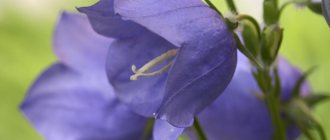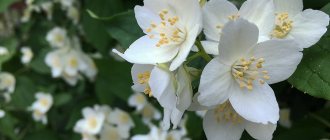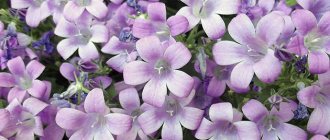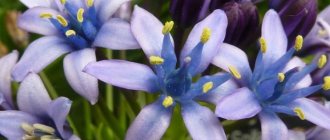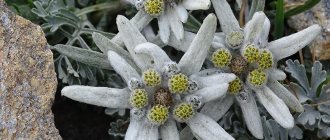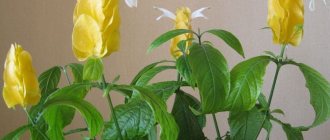Despite the fact that the bell has about four hundred and forty species, there are also some flowers that, from a distance, may be similar in structure to the bell. We have prepared for you a detailed selection of bell-like flowers with photos and basic recommendations for care and propagation. Use, save, share with other gardeners!
Adenophora
Adenophora is a close relative of the bell, which is easy to guess from its popular name - bell.
Review of beautiful ornamental shrubs for cottages and gardens, names with photos
Using hedgehogs to process potatoes
Types of seedling cassettes and their use
This herbaceous perennial is unpretentious, can grow in both sun and partial shade, is undemanding to the type of soil, and does not require shelter for the winter. Keep in mind that adenophora needs good soil drainage and does not grow well in acidic soils.
Bellflower blooms most of the summer. Easily propagated by seeds. In this case, winter sowing is preferable. If you did not have time to sow bells in late autumn and plan to sow in the spring, it is advisable to stratify them for a month (keep them in the refrigerator).
How to grow bluebells in the garden. General rules for planting and care.
You need to choose a place for planting that is sunny or lightly shaded. Any soil that is well drained will do.
You cannot plant garden bells:
- to areas where water stagnates;
- in lowlands with loamy or clayey soil;
- places that are flooded with water.
In any other places you can grow bells and they will feel great. If the groundwater is located close to the surface, you can make a tall, raised flower bed and provide good drainage.
Aquilegia
Behind the beautiful name aquilegia lies a well-known watershed. He is an eagle, doves, boots - there are countless popular names. English-speaking gardeners even call it “granny’s hat.”
About a hundred species of aquilegia are known, but hybrids are usually grown in gardens. Almost all watersheds feel great in the middle zone and even winter in the taiga zone without shelter. In addition, they prefer partial shade. Why isn't it an ideal plant for the garden?
The height of the plant can vary depending on the species: for example, from 30-40 cm for Biedermeier aquilegia and up to 120 cm for McCann hybrids.
Aquilegia blooms between June and August, depending on the variety. Sowing is carried out in open ground in the fall or through seedlings in March-April or in open ground in May.
How to care for Campanula
By following the basic rules, you can achieve lush flowering of campanula.
Lighting
The optimal location for the plant would be in a room with windows facing west or east. It must be remembered that the lighting needs to be bright, but diffused, without direct rays of the sun. If there is not enough lighting, then additional lamps are turned on. At least 12 hours of daylight is needed.
If possible, then with the arrival of warm days you can take the flower out into the fresh air. Both on the loggia and in the garden or veranda. The main thing is to provide protection from the scorching rays of the sun. But with the arrival of autumn, the plant needs to be returned back indoors. Once the difference between night and day temperatures becomes significant, then it's time to return.
Temperature
The flower needs a spring-summer temperature within 22-25 degrees. For the autumn months it is reduced by 2-3 degrees. In winter it is necessary to lower the temperature to 15 degrees. With the beginning of the heating season, you need to move the flower pot away from the radiators.
Humidity
Campanula is not picky about the air humidity in the room. There will be no problems with the plant even in dry air.
It is recommended to spray the flower a couple of times a week. This is necessary to clean the leaves from accumulated dust. And also for periodically creating a humid microclimate.
Watering
An amazing and “profitable” quality is its undemanding nature when it comes to watering. Campanula does well without frequent watering. It will even stand quietly in dry soil for a couple of weeks. An advantageous plant for travelers or business travelers. But, this quality applies only to the period of autumn-spring and winter.
Recommendations for watering:
- In summer you need to water regularly and abundantly. If the soil dries out completely in the summer, the flower may not only crumble, but also die. Water the plant only with warm, about 20-25 degrees, water. It must also be left standing for at least 10 hours.
- If a filter is installed, then such water can be used, as long as it is warm. If there is no filter, then only use settled water.
The soil
When growing, you need to choose the right soil. The soil for campanula should be fertile, loose and neutral in acidity. The most optimal would be a combination of peat and leaf soil. Some gardeners add vermiculite or perlite for looseness.
Choosing soil and pot
The peculiarity of the flower is that it can grow in any container. It can be a clay pot or a plastic one. Campanula looks beautiful and original in hanging and wide bowl-shaped pots.
Since the root system of the plant is very powerful and develops quickly and widely, this should be taken into account when choosing a container for planting. It is for this reason that it is advised to choose wide pots.
Top dressing
The plant has no special nutritional requirements. During activation, fertilizing with fertilizers is necessary. They use mineral complexes that are selected specifically for plants that bloom when grown indoors. Fertilizers are applied only once every 30 days.
With the arrival of September and until the beginning of spring, fertilizers are not applied. At this time, the campanula is resting and feeding will only bring harm to it.
Brugmansia
This plant is often called "angel's trumpets". This is due to the fact that it grows incredibly quickly, and the flowers of this crop can increase by 3-4 cm in 24 hours, and if the growing conditions are more than favorable, then even by 6-7 cm.
Brugmansia is a large and lushly flowering tree-like shrub that reaches 5 m in height. Its flowers are incredibly attractive. These are huge bells, up to 20 cm in diameter and up to 50 cm in length.
The buds of the culture have a persistent characteristic aroma, which is especially intensified at night. The color of the petals can be pink, orange, peach, yellow, cream and even greenish.
Diseases and pests
- When the root system of a flower remains in wet soil for a long time, the rhizome may begin to rot. In addition, rot may form on the shoots and leaves due to non-compliance with the watering regime.
- Scale insects or spider mites often settle on campanula. To see these pests, you need to inspect the flower more often. Scale insects can be detected by enlarged areas on the shoots.
- And because of the mites, the leaves will be covered with a thin web and become slightly sticky. First, you can try to get rid of it with soapy water. If washing with water does not help, then resort to spraying with insecticides.
- When a flower pot is placed in the wrong place, the leaves may turn yellow. It is also necessary to protect the plant from the rays of the sun. Choose the right place and such problems will not arise.
- The already thin shoots begin to stretch out with a clear lack of lighting. You need to move the flower to a more illuminated place. If watering is excessive, the leaves will become lethargic and lose turgor. After stabilization, the foliage returns to normal.
Hyacinthoides
Hyacinthoides are bulbous perennials that belong to the early flowering plants. There are other names: “Spanish scilla”, “Spanish endymion”, “Spanish scilla” and “wild hyacinth”.
This is an unpretentious crop that can often be found in flower beds and garden plots. The plant has basal leaves 20-30 cm long and a single peduncle reaching a height of up to 30 cm.
Hyacinth may have lilac, white, pink, blue or blue bell-shaped flowers 1.5-2 cm in diameter. The crop blooms at the end of May or beginning of June, and this period lasts up to 20 days.
Bell flower - description with photo
Representatives of the genus are herbaceous one, two or perennial plants, which are characterized by relatively rapid growth after planting.
Leaves often vary in shape on the same plant - larger and wider at the base of the stem and smaller and narrower ones higher up the stem. The edge of the leaf can be either whole or jagged. The leaves, flowers and stems of some species are covered with villi.
Garden bells vary in size: from low-growing, miniature types to tall varieties over one and a half meters in height.
TOP – 19 unpretentious long-flowering perennials
The root system is also different - it can be taproot, fibrous or creeping. For propagation by division, a vegetatively mobile creeping root system, which is characteristic of low-growing mountain bells, is suitable.
The decorative part of this plant is the flowers, which have a characteristic bell-shaped shape, but in some species they can be more elongated, goblet-shaped or star-shaped.
The flowers are solitary or collected in inflorescences, located either at the ends of the peduncles or along the length of the stem.
What colors are bluebells? The color of the flowers can be blue, violet, blue, pink or white, and there are two-color varieties.
The fruit is a capsule capsule containing numerous small seeds.
Gentian
Gentian has not yet taken root among our gardeners as a popular flowerbed decoration. It is quite rare to find it in a modern front garden. However, this plant is undeservedly underrated. This is a low to medium-height herbaceous plant with large flowers located very close to each other, thus creating a blooming cloud. The gentian plant came to us from the wild. It is great for decorating flower beds, edging flower arrangements, and also for decorating borders. This flower has collected the widest palette of blue shades. No other plant can boast such an abundance of blue, blue and purple flowers. There are about 90 varieties of gentian, among which there are other shades, for example, white, pink and yellow. Gentian has a long flowering period, which begins in summer and ends in late autumn. It is quite common in different latitudes of Europe and Asia.
How to water Decembrist at home?
How to replant aloe at home step by step
How to replant anthurium at home video
A plant such as gentian is propagated by dividing the bush, cuttings or sowing seeds. Planting and caring for seedlings require attention. Growing gentian from seeds is difficult because the seeds are very small and their development requires moist, well-ventilated conditions with a temperature of 7 degrees Celsius. They germinate only after 1-3 months. If the temperature rises significantly during this period, the seedlings may die.
Campanula transplant
There is no point in replanting a flower every year. The only exception is if the pot becomes small, because the overgrown roots are cramped in it. The transplant is planned for spring or autumn. In a new, larger container, a drainage layer of small pebbles or expanded clay is placed on the bottom.
Plants are replanted using the transshipment method. Carefully transfer it to a new container, trying not to disintegrate the soil lump. After installing the flower in a new pot, add soil and water it. If necessary, add soil when it settles in the container.
Preparing for landing
The plant retains its decorative properties for no more than three years, so it is rarely replanted. When flowering becomes less lush, the shoots begin to become bare. Therefore, it is much easier to root cuttings. Or grow new plants from seeds.
If you bought a flower in a store, it is recommended to replant it immediately. A wide and not very deep pot is best. Over time, you can choose an even wider container.
The soil should be loose and nutritious so that water and air can pass well. But you can also use universal soil, which is suitable for indoor flowers.
The transplant instructions are quite simple:
- Place drainage on 1/4 of the pot. For a large plant - 1/3 of the volume.
- Fill half the pot with fresh soil.
- While the plant is in the old container, it is first watered well. And then, so as not to damage the roots and the former earthen lump, carefully remove it.
- Using a sharp knife, cut off 5 mm of roots that have become matted. And then several small (3-5 mm) cuts are made along the booms.
- The new plant is placed in a new pot and more soil is added on top, compacting it slightly. Then water it, but not too much.
After transplantation, the flower is removed to a cool and dark place. Temperatures are from 18 to 20 degrees above zero. As soon as the plant begins to grow, it is returned back to where it was taken from.
Datura
Datura common (photo below) is difficult to confuse with other plants. He is big, even huge. The bush can grow up to a meter in height. The leaves are beautifully cut. They look powerful, fresh, attractive (for those who eat grass). Only animals will not feast on them. They are repelled by a strange, even disgusting smell. Datura plant can be found in large quantities in any area. Typically, Datura chooses the following areas for its habitat: wastelands, roadsides and vegetable gardens. Datura grass flowers are so magnificent that this plant has attracted the attention of landscape designers. It can be seen in flower beds and lawns. The plant is used as an ornamental. Moreover, it has a fairly long flowering period: almost all summer (depending on climatic conditions) it delights viewers with huge bowls of white flowers. You just need to keep in mind that the plant is poisonous. Flowers can be intoxicating (hence the name) with just their scent. In hot weather, in the absence of wind, it concentrates around the plant. It is not advisable to plant such “decor” in the area near children’s playgrounds, institutions, cafes, and so on. Kids may not realize that they should run away from a cloying aroma. The result is a hospital.
Features of the plant
In nature, these plants are distributed almost everywhere: the only place that has not been conquered by them is Central Africa. In all other parts of the globe, these plants thrive and are not threatened. The main diversity of species occurs in Europe, both Western and Eastern.
These plants can be either annuals, biennials or perennials. Most often, they are grown in gardens and flower beds as perennials. This choice is far from accidental. The fact is that all perennials have one unpleasant feature: from the point of view of brightness and attractiveness, their flowers, as a rule, are less bright and catchy than those of annuals.
On the other hand, the flowering time of perennials also does not always satisfy many gardeners. Therefore, in some cases, perennials are abandoned, each year updating the assortment of plants in the flower beds, annually sowing different temporary inhabitants in the same areas.
Bells do not have such shortcomings. Their flowering is always bright and memorable. It lasts, as a rule, at least 1.5 months, and bell flowers in their decorative properties are practically not inferior (if not superior) to many annual crops.
Lobelia
From June to September, lobelia pleases us with its flowering. Planting and care are not difficult. Photos taken in summer cottage gardens show that this delicate flower will look appropriate wherever you plant it. Lobelia flower fireworks have a different range of shades: white, red, burgundy, purple, blue, light blue. It is used to design flower beds, garden paths, borders, mixborders, flower “streams” or rugs.
Lobelia belongs to the bellflower family and is a creeping plant. The bushes are distinguished by abundant flowering, since small fan-shaped flowers bloom almost simultaneously, their number is huge.
The most common varieties of lobelia begin to bloom approximately 70-80 days after sowing the seeds. If you want to time the appearance of flowers just in time for the beginning of summer, then you need to start sowing seedlings in March. In general, these dates are not critical; they can be slightly shifted either towards February or closer to April. If sowing will be done at the end of February, then you will not be able to do without the help of lighting (fluorescent, halogen, LED lamps). Germination of lobelia sprouts can be observed already on the tenth or twelfth day after sowing.
Bluebells amaze with their large number of varieties with which you can decorate your garden. And at the same time, it requires absolutely no complicated care.
Reproduction of Campanula
These amazingly tender bells can be grown by sowing seeds, cuttings from campanula, or by transplanting by dividing the bush.
Propagation by seeds
Seeds need to be sown in early March.
- The seeds are very small in size, so they can be sown both in small boxes and in cups. The soil in these containers consists of dry soil, such as leaf soil, which is laid out at the bottom.
- Peat soil is laid on top and watered.
- Next, lay out the seeds and lightly press down. There is no need to sprinkle them.
- The top of the container is covered with film or glass.
- Every day, until the seedlings appear, open the containers, ventilate and spray if necessary.
- When shoots appear, the cover is removed.
- After the growth of 4-6 leaves, the seedlings dive.
Dividing the bush
When the campanula is ready for transplantation, this is the moment when the bush can be divided into parts. Using a knife, cut the flower root into several sections. The cut area must be treated with crushed activated carbon. Each division is planted separately and grown as an adult plant. If the bush is young, then it is divided only into two parts.
Campanula cuttings
If you want to grow campanula from cuttings, then this should be timed for the beginning of autumn.
- To do this, a strong shoot with leaves is selected at the bottom of the bush. It is cut off and the cut end is placed in a manganese solution for ten hours.
- When whitish roots appear, the cuttings are placed in a glass of cool water for several hours.
- Next, prepare a small container with a soil mixture of peat soil and sand.
- Cuttings are planted into it to a depth of up to three centimeters. You can plant several pieces in one container. For rooting, cover the container with film.
It is necessary to ventilate and spray the sprouts periodically. They are transplanted into a new container in March. Plant by transfer method, trying not to scatter the soil ball around the roots.
